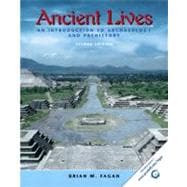
| Preface | |
| Authors Note | |
| About the Author | |
| Introducing Archaeology and Prehistory | |
| How Archaeology Began | |
| The Discovery of Early Civilizations Discovery | |
| Austen Henry Layard at Nineveh | |
| The Antiquity of Humankind | |
| The Origins of Scientific Archaeology | |
| Archaeology and Prehistory | |
| Doing Archaeology: A Short Guide to Archaeological | |
| Diversity Prehistory and World Prehistory | |
| Major Developments in Human Prehistory | |
| Why Are Archaeology and World Prehistory Important? | |
| Mysteries of the Past Doing Archaeology: Pseudoarchaeology, or You, Too, Can Be an Armchair Indiana Jones! | |
| The Powerful Lure of the Past Archaeology and Human Diversity | |
| Archaeology as a Political Tool Archaeology and Economic Development | |
| Garbology Who Needs the Past? | |
| Site: Inyan Ceyaka Atonwan, Minnesota | |
| Summary | |
| Critical Thinking | |
| Questions | |
| Key Terms and Sites | |
| The Record of the Past | |
| The Goals of Archaeology Constructing Culture History Discovery | |
| The Folsom Bison Kill Site, New Mexico Reconstructing Ancient Lifeways Site | |
| The Ain Ghazal Figurines Explaining Cultural Change Doing Archaeology | |
| An Archaeologists Ethical Responsibilities Research Design Data Acquisition Analysis Interpretation Publication and Curation What Is Culture? | |
| The Archives of the Past | |
| The Archaeological Record Preservation Conditions A Waterlogged Site | |
| Ozette, Washington A Dry Site | |
| Puruchucho-Huaquerones, Peru Cold Conditions | |
| Nevado Ampato, Peru Volcanic Ash | |
| Ceren, El Salvador Context Discovery | |
| Tragedy at Ceren, El Salvador Time and Space | |
| The Law of Association | |
| The Law of Superposition | |
| Summary | |
| Critical Thinking | |
| Questions | |
| Key Terms and Sites | |
| Acquiring the Record Discovery | |
| Recording the Behistun Inscription, Iran How Do You Find Archaeological Sites? | |
| Accidental Discoveries Deliberate Survey Settlement Patterns and Settlement Archaeology Site | |
| Teotihuacin, Mexico Remote Sensing and Geographic Information Systems (GIS) How Do You Dig Up the Past? | |
| The Ethical Responsibilities of the Excavator Research Design and Problem-Oriented Excavation Koster Doing Archaeology | |
| Archaeological Sites Types of Excavation Excavation as Recording Relative Chronology Chronometric Dating Major Chronological Methods Doing Archaeology | |
| Dating the Past | |
| Summary | |
| Critical Thinking | |
| Questions | |
| Key Terms and Sites | |
| How Did People Live? | |
| Technologies of the Ancients Doing Archaeology | |
| Classifying Artifact Types Stone Doing Archaeology | |
| Lithic Analysis Bone and Antler Wood Clay (Ceramics) Doing Archaeology | |
| Ceramic Analysis Metals and Metallurgy Basketry and Textiles Site | |
| Ancient Wine at Abydos, Egypt Subsistence | |
| Making a Living Doing Archaeology | |
| Studying Ancient Subsistence Animal Bones Plant Remains Doing Archaeology | |
| Flotation Methods Fishing and Fowling Reconstructing Ancient Diet | |
| Summary | |
| Critical Thinking | |
| Questions | |
| Key Terms and Sites | |
| Part 2 Ancient Interactions | |
| Individuals and Interactions Social Ranking Doing Archaeology | |
| The Law Code of Hammurabi of Babylon, 1760 B.C. Site | |
| The Sepulcher of the Maya Lord Pacal, Palenque, Mexic | |
| Table of Contents provided by Publisher. All Rights Reserved. |
The New copy of this book will include any supplemental materials advertised. Please check the title of the book to determine if it should include any access cards, study guides, lab manuals, CDs, etc.
The Used, Rental and eBook copies of this book are not guaranteed to include any supplemental materials. Typically, only the book itself is included. This is true even if the title states it includes any access cards, study guides, lab manuals, CDs, etc.